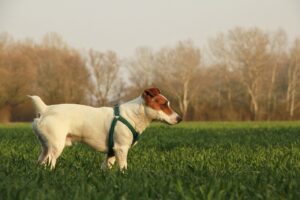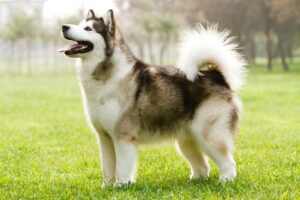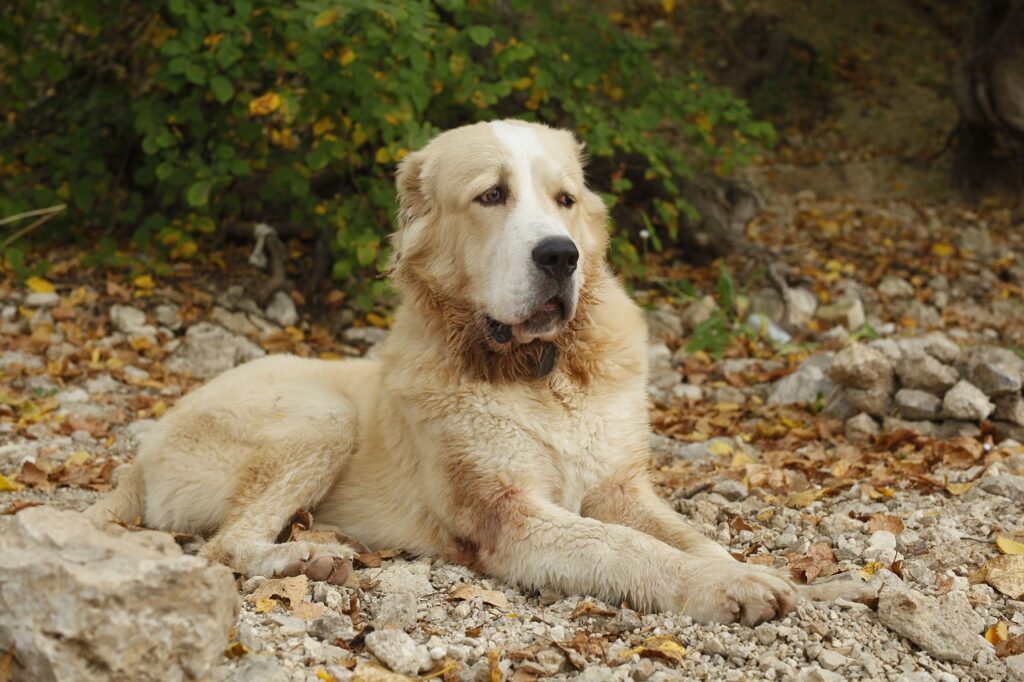
Known for its distinctive presence, the Alabai dog or Central Asian Shepherd, radiates an undeniable confidence and dignity. These dogs epitomize courage and endurance, presenting an awe-inspiring blend of power and intelligence. Far from being defiant, their independent spirit reflects a balanced temperament, forging them into loyal and protective allies.
Alabai’s are a remarkable fit in the Philippines due to their adaptability and resilience, thriving even in compact urban settings. Their protective instincts make them excellent companions for family homes. Despite their significant size, they exhibit gentleness, especially around children. Beyond pets, their intelligence and tenacity promise a unique bond of security and companionship.
In this comprehensive guide, we will delve into the world of the Alabai dog, exploring crucial aspects such as its price and the factors influencing it. We will also shed light on the annual expenses involved in owning one, how to identify an authentic breed and tips for finding a reputable breeder. Additionally, we will discuss the pros and cons of having them as pets and introduce you to other breeds that resemble this remarkable canine.
How Much Does an Alabai Dog Cost in the Philippines?
Finding a Central Asian Shepherd in the Philippines can be challenging due to their limited availability, leading to high demand and potentially higher prices. You might even need to consider importing these dogs to meet your requirements. The acquisition of an Alabai Dog typically involves an investment ranging from ₱100,000 to ₱200,000, influenced by factors such as the dog’s lineage, the breeder’s reputation, and the dog’s color or pattern.
In addition, the appeal of imported dogs can lead to a more significant outlay. The expenses tied to importing these canines boost their initial cost. Nonetheless, for some enthusiasts, the allure of a foreign pedigree warrants the extra expense.
As you consider adding one of these distinguished canines to your family, ensuring the breed’s authenticity becomes paramount. Many breeds are similar to this one, making differentiation a complex task without an experienced eye. Consequently, it would help if you familiarized yourself with these dogs’ unique physical traits and temperament. Continue reading as I discuss these aspects in the section below.
Factors Influencing the Price
Several factors influence the price of these dogs, each playing a crucial role in the final figure.
a. Bloodline
Their lineage significantly impacts their price tag. Dogs from a distinguished pedigree, boasting a line of champions, are priced higher than those from less illustrious backgrounds.
b. Breeder Reputation
A breeder’s reputation is another significant factor. Breeders who prioritize the health and well-being of their dogs, conduct necessary health screenings, and provide nurturing environments often command higher prices.
c. Health Testing
Clearances for inherited genetic diseases, especially hip dysplasia, are essential. Puppies that come with health clearances often have a higher price point.
d. Demand
The market’s demand and supply dynamics play a role, too. If Alabai puppies are scarce but highly sought after, their price will inevitably rise.
e. Coat Color
Interestingly, the coat color of an Alabai can also affect its price. Unique or coveted colors or patterns may fetch a higher price.
The cost of a Central Asian Shepherd puppy isn’t arbitrary. It reflects the bloodline, breeder’s reputation, health testing, demand, and even coat color. Understanding these aspects can ensure you make an informed decision when welcoming one of these noble canines into your home in the Philippines.
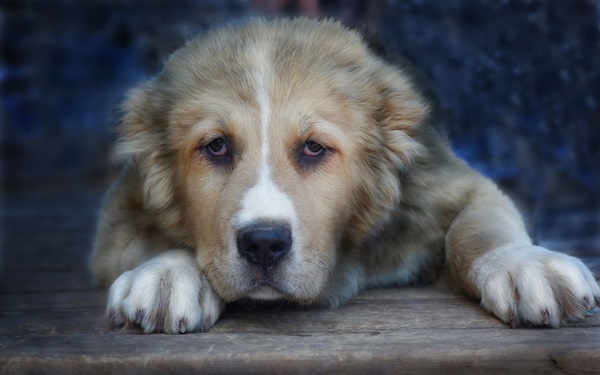
The Yearly Expenses
The delight of owning an Alabai dog is immeasurable. Yet, it’s also important to be aware of the financial commitment involved. This article will provide a comprehensive breakdown of the annual cost of owning an Alabai in the Philippines.
1. Food
Feeding an Alabai, known for its size and energy, can incur considerable costs. Considering a daily intake of half a kilogram of dog food, the monthly feeding expense would be about ₱3,000 (₱200 x 15 days). Hence, the yearly feeding cost for an Alabai dog would amount to approximately ₱36,000 (₱3,000 x 12 months).
2. Veterinary Care
They require yearly vaccinations, including Rabies, 5-in-1 DHPP, Leptospirosis, and Bordetella, alongside regular veterinary care such as check-ups, deworming, and flea treatments. While costs can vary depending on various factors, setting aside around ₱10,000 per year for veterinary expenses is a safe estimate to ensure comprehensive care.
3. Grooming
Regular grooming, brushing, and potentially professional services are necessary to maintain a healthy coat. The estimated annual cost for this grooming can range from ₱6,000 to ₱12,000 or ₱500 to ₱1,000 per month, though actual costs may vary.
4. Miscellaneous Costs
Miscellaneous costs can go up to ₱15,000 yearly, covering expenses such as toys, a cage, a leash, and more. These costs may be higher than those for other breeds due to the Alabai’s large size, which requires larger and potentially more expensive items.
Total Yearly Expenses
The expected yearly expenses for caring for an Alabai dog range from ₱67,000 to ₱73,000. This estimate includes costs for food, grooming, miscellaneous items like toys and leashes, and potential importation fees, among other possible expenses.
First Year Expenses
| Expense | Cost |
| Alabai Dog’s Price | ₱100,000 to ₱200,000 |
| Food | ₱36,000 |
| Veterinary Care | ₱10,000 |
| Grooming | ₱6,000 to ₱12,000 |
| Miscellaneous Costs | ₱15,000 |
| TOTAL | ₱167,000 to ₱273,000 |
Understanding these costs can help prospective owners ensure you’re prepared to provide the best care for your Alabai.
Unique Physical Traits to Look For an Alabai Dog
The Alabai dog holds a regal stature in the realm of canine companions. Originating from Central Asia, this breed carries an air of nobility mirrored by the distinct physical traits that set them apart.
- Size and Build: These large dogs typically weigh between 80 to 200 pounds. Their muscular build and robust bone structure contribute to their formidable presence.
- Coat and Color: They sport a dense double coat in shades of white, black, brindle, and gray. This coat not only enhances their majestic appeal but also serves as protection against harsh climates.
- Head and Muzzle: These dogs’ heads are broad and robust, paired with a short, strong muzzle. Their dark, almond-shaped eyes exude an intense gaze that’s hard to overlook.
- Ears and Tail: Traditionally, they have cropped ears and docked tails, a practice rooted in their history as livestock guardians. However, when left natural, their ears are medium-sized and hang close to their cheeks, and their tails curl over their back.
- Movement: Despite their size, these gentle giants move with surprising grace and agility, a testament to their strength and endurance.
These unique physical attributes are the hallmarks of the purebred. They embody stories of a rich heritage and resilience that has spanned centuries. If you’re seeking a pet that’s a gentle companion and a formidable protector, this might be your perfect match.
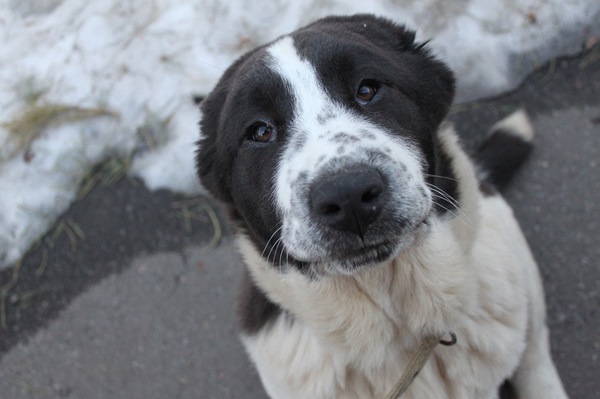
Questions to Ask Your Breeders
Seeking a breed as majestic and imposing as the Alabai is an exhilarating experience. The key to ensuring a genuine breed lies in asking the right questions to potential breeders.
- Meet the Parents: Requesting to meet the parent dogs offers insight into your future pet’s potential temperament, size, and physical traits.
- Health Tests: Inquire about health tests performed on the parents. This can help predict any genetic conditions or diseases the puppy might inherit.
- Breeding Experience: Understanding the breeder’s experience indicates their knowledge and commitment to maintaining breed standards.
- Socialization Practices: Early socialization is crucial for well-rounded dogs. Asking about their practices can give you a glimpse into your future pet’s behavior.
- PCCI Registration: An essential question for potential pet owners in the Philippines is whether the breeder is registered with the Philippine Canine Club Inc (PCCI). This assures that the breeder adheres to specific ethical standards.
- Canine Caretaker: Determining who will be the primary caretaker helps assess if the breed fits your lifestyle well.
- Temperament of Parent Dogs: As Alabai dogs can be protective and independent, understanding the temperament of the parent dogs can offer a hint to how your puppy may behave.
With these questions, you’re well-armed to delve into the world of breeders and find your perfect match. Remember, the goal isn’t just about finding a pet; it’s about welcoming a new member into your family. So, take your time, ask the right questions, and soon enough, you’ll find your ideal Alabai companion.
The Ups and Downs of Owning an Alabai Dog
The noble Alabai dog holds a unique allure. Their majestic stature and formidable presence capture the hearts of many. But as with any breed, owning one in the Philippines has its pros and cons.
Pros
- Grooming Ease: The Alabai’s coat is surprisingly low maintenance. A good brush once a week keeps it glossy and healthy, a blessing in the tropical climate.
- Loyal Protectors: These dogs are companions and guardians known for their protective nature. Their loyalty is unwavering, making them excellent watchdogs for your home.
- Intelligent and Trainable: They are intelligent creatures, quick to learn, and eager to please. Their trainability makes them adaptable companions, capable of adjusting to various situations.
- Exercise Companions: With their active nature and high endurance, Alabais make fantastic exercise companions. They’re the perfect motivation for those early morning jogs or late afternoon walks.
Cons
- Heat Sensitivity: They are not originally from tropical climates. The heat can be challenging, requiring extra care to stay cool and hydrated.
- Need for Space: Given their size, these dogs need ample space to move around. This can be a challenge in urban areas with limited living spaces.
- Protective Instincts: While their protective nature is a pro, it can also be a con. They can be wary of strangers, making social gatherings at home require careful management.
- High Exercise Needs: Alabais are active dogs that require regular exercise. Neglecting this need can lead to behavioral issues, a responsibility that potential owners must consider.
These dogs’ majestic presence and loyal nature are as much a part of their charm as they are challenges to be tackled. With this insight, the scales of decision are now in your hands. May it guide you in your quest for the perfect canine companion in our tropical paradise.
Dogs like the Alabai
The Alabai dog stands out with its imposing presence and steadfast loyalty. But other breeds echo these admirable traits, offering an array of options for prospective pet owners.
Caucasian Shepherd: Known for their protective instincts and robust build, the Caucasian Shepherd resembles the Alabai in temperament and physical attributes. They’re excellent guardians, their loyalty unwavering, making them a strong contender for those seeking a formidable companion.
Central Asian Shepherd: While it shares a geographical origin with the Alabai, the Central Asian Shepherd is a distinct breed. Its strength and resilience mirror that of our favorite breed, but its adaptability to various climates gives it an edge, particularly in the tropical setting of our island nation.
Saint Bernard: Venturing away from the Asian continent, the Saint Bernard offers a unique alternative. Despite its gentle demeanor, this breed is known for its courage and endurance. Its size rivals the Alabai’s, and its heart matches it in warmth and loyalty. Discover the price of a Saint Bernard in the Philippines here.
Exploring these breeds expands the possibilities, offering an exciting tapestry of companionship options. It’s a testament to the richness of the canine world, where every breed holds a unique allure yet echoes the timeless qualities we admire in the Alabai.




